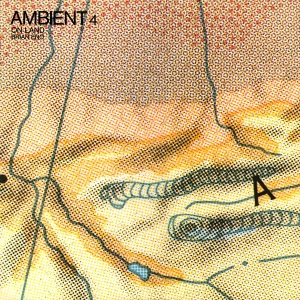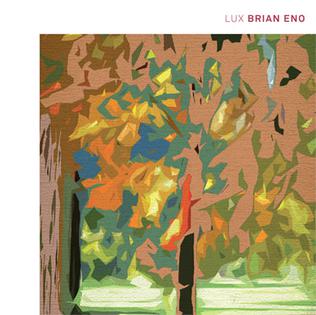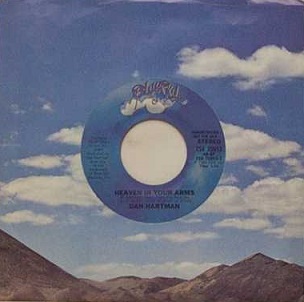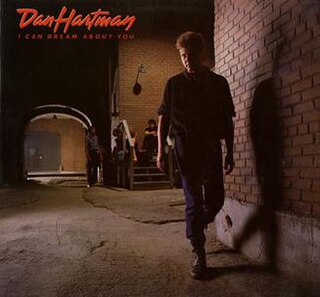
Ambient music is a genre of music that emphasizes tone and atmosphere over traditional musical structure or rhythm. It may lack net composition, beat, or structured melody. It uses textural layers of sound that can reward both passive and active listening and encourage a sense of calm or contemplation. The genre is said to evoke an "atmospheric", "visual", or "unobtrusive" quality. Nature soundscapes may be included, and the sounds of acoustic instruments such as the piano, strings and flute may be emulated through a synthesizer.

Ambient 1: Music for Airports is the sixth studio album by Brian Eno, released in March 1978 by Polydor Records. It is the first of Eno's albums released under the label of ambient music, a genre of music intended to "induce calm and a space to think" while remaining "as ignorable as it is interesting". While not Eno's earliest entry in the style, it is credited with coining the term.

Daniel Earl Hartman was an American rock musician, multi-instrumentalist, singer, and songwriter and original frontman for several bands, including The Soploids, Mak and the Turnarounds, Our Wringer, Last Wing, and Orion. Among songs he wrote and recorded were "Free Ride" as a member of the Edgar Winter Group, and the solo hits "Relight My Fire", "Instant Replay", "I Can Dream About You", "We Are the Young" and "Second Nature". "I Can Dream About You", his most successful song, reached No. 6 on the Billboard Hot 100 in 1984 and No. 12 on the UK Singles Chart in 1985. The James Brown song "Living in America", which Hartman co-wrote and produced, reached No. 4 on March 1, 1986.

Discreet Music is the fourth studio album by Brian Eno, and the first released under his full name. The album is a minimalist work, with the titular A-side consisting of one 30-minute piece featuring synthesizer and tape delay. The B-side features three variations on Canon in D Major by Johann Pachelbel, performed by the Cockpit Ensemble and conducted by Gavin Bryars.

Ambient 2: The Plateaux of Mirror is a 1980 studio album by Harold Budd and Brian Eno. A work of ambient music, it is the second installment of Eno's Ambient series, which began in 1978 with Ambient 1: Music for Airports. Ambient 2 consists mainly of minimalist composer Budd playing improvisational piano in soundscapes produced by Eno. The album received positive reviews and lead to Budd and Eno collaborating again for the sonically similar The Pearl (1984).

Ambient 4: On Land is the eighth solo studio album by Brian Eno, released in March 1982 by EG Records. It was the final edition in Eno's ambient series, which began in 1978 with the release of Ambient 1: Music for Airports. The album was released to critical acclaim, and is, along with the rest of the ambient series, recognised as a landmark album in the history of the ambient music genre.

Another Day on Earth is the twenty-second solo studio album by Brian Eno, released on 13 June 2005 in the UK and Europe through Hannibal Records, and on 14 June 2005 in the US. The album predominantly recorded and mixed on Macintosh software, using Logic Pro, over a period of four years.

Lux is the twenty-fifth solo studio album from Brian Eno, released through Warp on 13 November 2012. The album is a collection of ambient soundscapes that have been installed in art galleries and airport terminals. Critical reception has positively compared it with Eno's previous ambient work and noted that it is both relaxing as well as challenging music for those who engage it critically. In 2013, Brian Eno created a number of limited edition prints featuring the cover artwork from Lux made available only from his website.

Brian Peter George St John le Baptiste de la Salle Eno, also known by the mononym Eno, is an English musician, composer, record producer and visual artist. He is best known for his pioneering contributions to the ambient music and electronic genres, and for producing, recording, and writing works in rock, artistic pop and minimalist drone music. A self-described "non-musician", Eno has helped introduce unconventional concepts and approaches to contemporary music. He has been described as one of popular music's most influential and innovative figures. In 2019, he was inducted into the Rock and Roll Hall of Fame as a member of Roxy Music.

"Atomic City" is a song by English singer Holly Johnson, released in 1989 as the third single from his debut solo album Blast. It was written by Johnson and Dan Hartman, and produced by Hartman. The song reached number 18 in the UK Singles Chart and remained in the top 100 for four weeks. A music video was filmed to promote the single, directed by Colin Chilvers and produced by Nick Verden for Radar Films.

Keep the Fire Burnin' is a compilation album by American musician and singer-songwriter Dan Hartman, which was released posthumously on December 20, 1994 by Columbia. The album features remakes of Hartman's hits and previously unreleased material.

"Waiting to See You" is a song by American singer-songwriter and musician Dan Hartman, which was released in 1986 as a single from the film soundtrack of Ruthless People. It was written by Hartman and Charlie Midnight, and was produced by Hartman. The song was also to be included on Hartman's album White Boy, which was shelved by MCA in 1986.

"Heaven in Your Arms" is a song by the American musician Dan Hartman, released in 1981 as the first single from his fourth studio album It Hurts to Be in Love. It was written and produced by Hartman.

It Hurts to Be in Love is the fourth studio album from American singer and songwriter Dan Hartman, released by Blue Sky in 1981. It was produced by Hartman and mixed by Neil Dorfsman.

"All I Need" is a song by the American musician Dan Hartman, released in 1981 as the third and final single from his fourth studio album It Hurts to Be in Love. It was written and produced by Hartman.

I Can Dream About You is the fifth studio album from American musician/singer/songwriter Dan Hartman, released on May 3, 1984, by MCA. The album was produced by Hartman and Jimmy Iovine.

White Boy is the sixth studio album from American musician/singer/songwriter Dan Hartman. It was recorded during 1985 and 1986 but remains unreleased.

"The Love You Take" is a duet song by American musician-singer-songwriter Dan Hartman and freestyle\dance singer Denise Lopez. As part of the official soundtrack for the 1988 comedy film Scrooged, starring Bill Murray, it would be released as a single. The song was written and produced by Hartman.

"Second Nature" is a song by American singer-songwriter Dan Hartman, released in 1985 as the fourth and final single from his fifth studio album I Can Dream About You (1984). The song was written by Hartman and Charlie Midnight, and produced by Hartman and Jimmy Iovine. "Second Nature" reached No. 39 on the Billboard Hot 100 and remained in the charts for 12 weeks.

Reflection is the twenty-eighth studio album by Brian Eno, released on 1 January 2017 on Warp Records. It is a piece of generative ambient music produced by Eno, which plays indefinitely via an app, modulating its output at different times of the day. A pre-recorded version of the album is available on CD and vinyl, which runs for 54 minutes. Digital streaming versions of the album update on a seasonal basis. It was nominated for the 2017 Grammy Award for Best New Age Album and was released to a positive acclaim by critics.




















